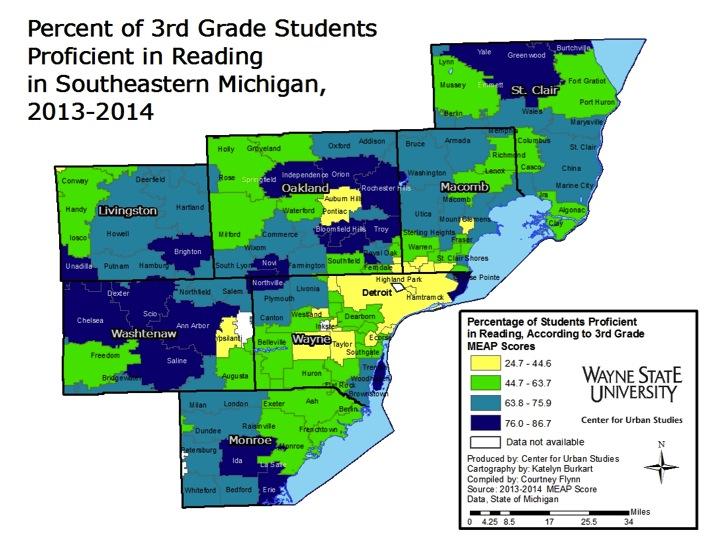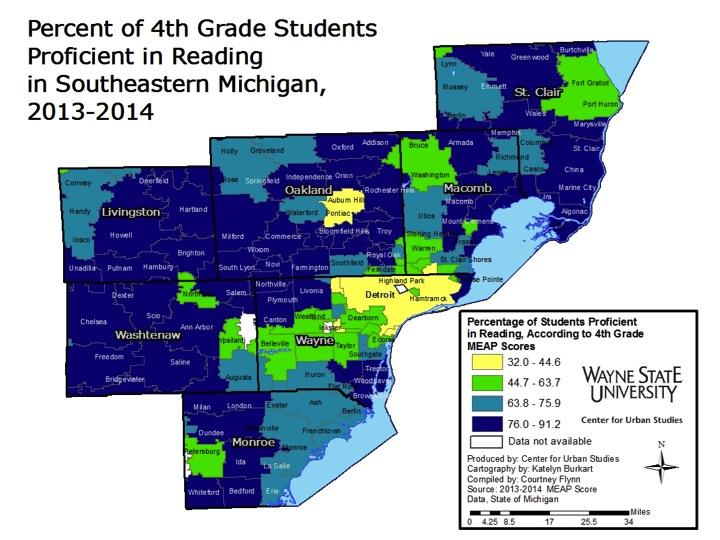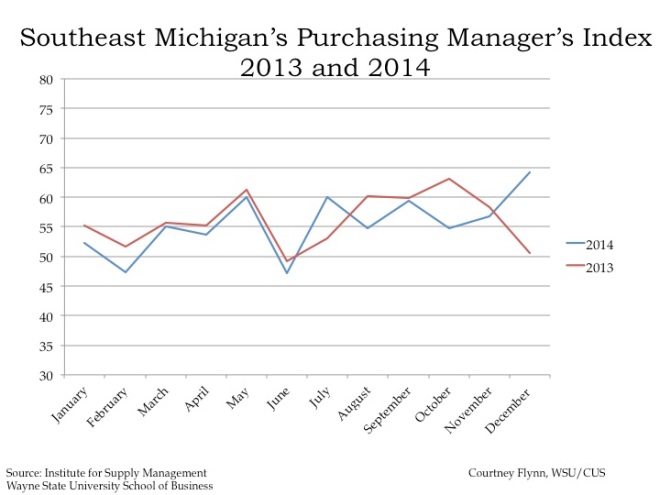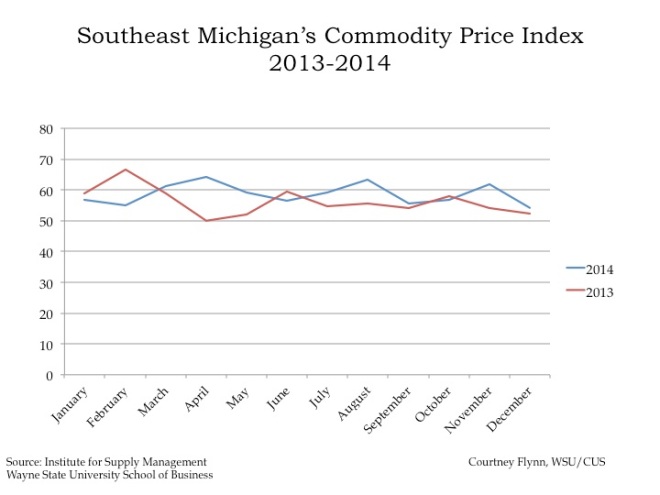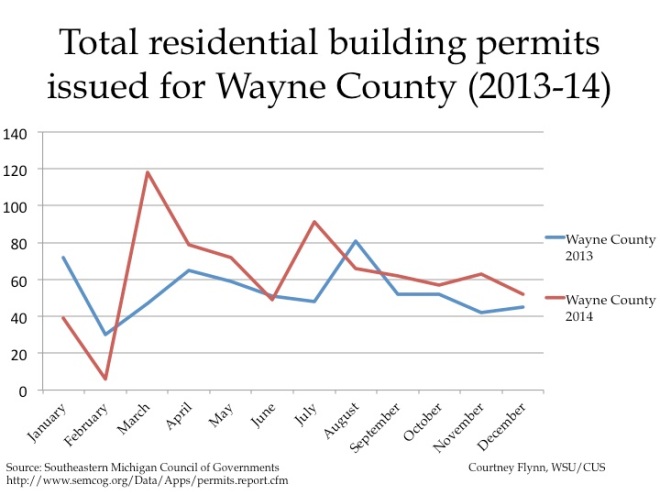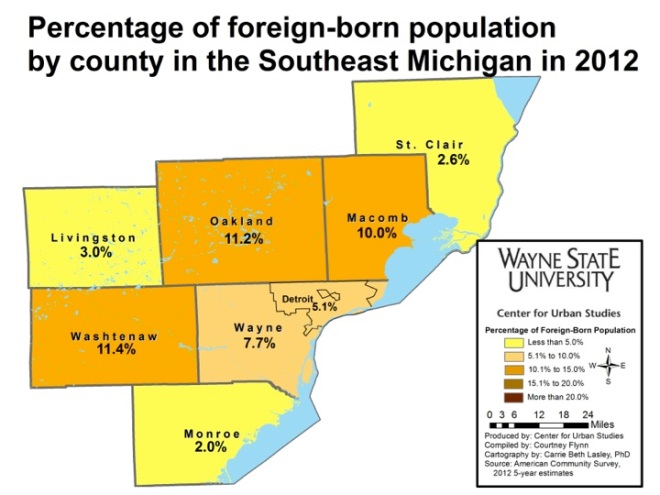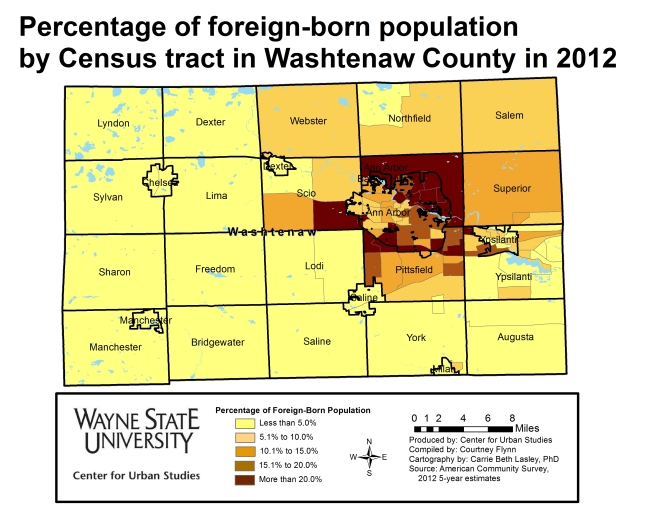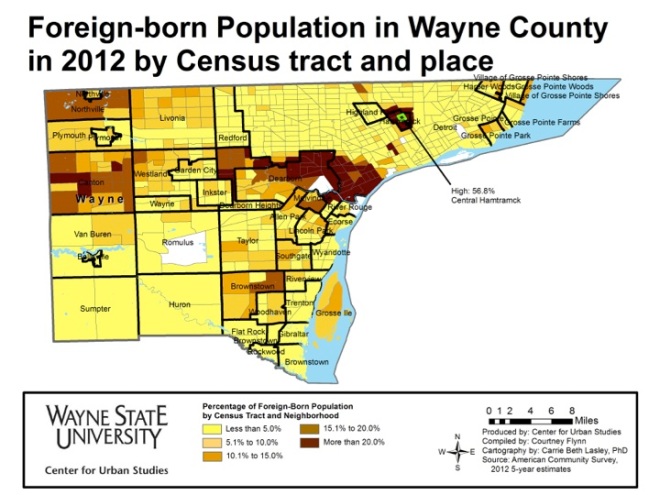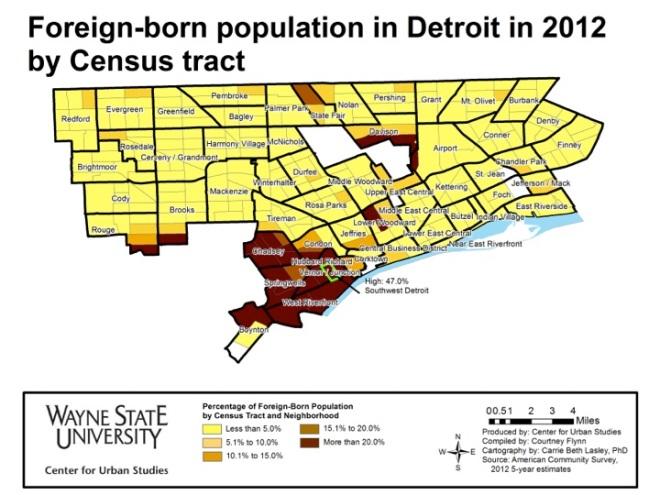Preliminary numbers released by County Equalization Departments show that throughout Oakland, Macomb and Wayne counties property values increased between 2013 and 2014. According to state law, property assessments are equal to half a property’s market value. Overall, Oakland and Macomb counties saw assessed property values increase by upwards of 11 percent. In Wayne County though, overall assessed property values increased by about half that amount. The assessed property values in the city of Detroit decreased by 9.7 percent. The values are expected to be approved by the county legislative bodies in April.
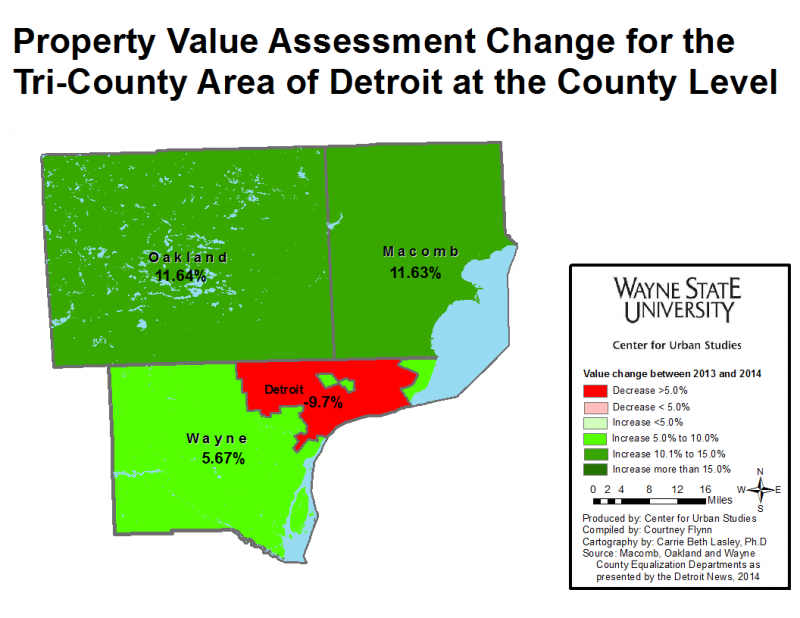
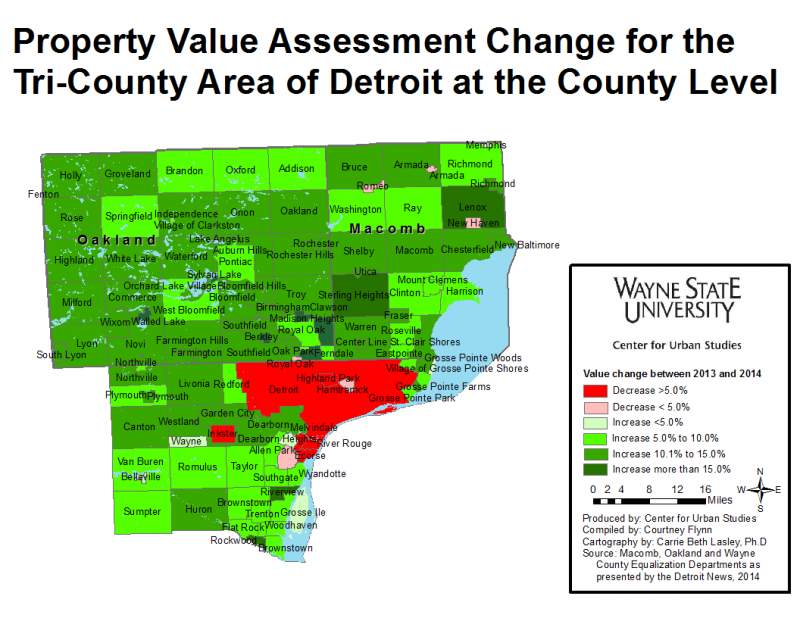
As seen in the first map, the tri-county region experienced an increase in assessed property values. In the second map, we are able to see what communities experienced higher increases than others. In Oakland County, Madison Heights experienced the largest percentage increase in assessed property values at 15.95 percent, while in Macomb County, Sterling Heights had the largest percentage increase at 15.29 percent. Riverview in Wayne County had the largest percentage increase in the tri-county area at 20.95 percent.
Wayne County, however, was also the only county in the area where certain communities experienced a decrease in their property assessment values. River Rouge in Wayne County experienced the largest decline at 26.65 percent. Other communities in the county that experienced property assessment value declines were Inkster, Hamtramck, Detroit and Lincoln Park.
Values for New Haven, Romeo and the Village of Armada, all in Macomb County, were not available.
